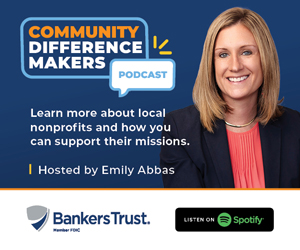Bad debt becomes increasingly bad news for hospitals

Employers and workers aren’t the only ones feeling the pinch from soaring health-care costs. As many businesses are forced to trim insurance benefits for their employees, hospitals are seeing record levels of unpaid billings.
In 2002, the most recent figures available, Iowa hospitals collectively provided $309 million worth of uncompensated care, compared with $280 million in 2001. The unpaid care includes both bad debts — billings that the hospitals expected to be paid for but weren’t, typically for uninsured or underinsured patients — and charity care, for which hospitals don’t expect to be paid. While the level of charity care statewide remained level at $135 million, the amount of bad debts climbed to $174 million, a 20 percent jump in one year.
The increase in bad debts is a reflection of national trends; in 2002 the total cost of unreimbursed care in the United States reached an estimated $22.3 billion.
At Broadlawns Medical Center, Polk County’s safety-net hospital for low-income residents, 62 percent of the care provided is uncompensated, which officials say is among the highest levels of any hospital in the nation. At the same time, billings written off as bad debt mounts at Des Moines’ hospitals.
At Iowa Health-Des Moines, total uncompensated care has grown by about 5 percent in the past two years, to more than $17 million last year, or about 2 percent of gross revenue, said Sid Ramsey, vice president of strategic business development and marketing. Those figures don’t include any of the health system’s free and reduced-fee services, which when taken together account for about $15 million in additional uncompensated care.
The economic downturn has been a big factor behind the trend, Ramsey said, both in terms of more unemployed people who are unable to pay their bills, and higher co-payments and deductibles that are making it harder for those who are working to pay for their portion of medical expenses. Additionally, there appears to be an increasing number of undocumented patients — illegal aliens who access emergency-room care.
Mercy Medical Center’s bad-debt expense last year was about $20 million, or about 4.5 percent of its net patient revenues, said Steve Kukla, Mercy’s chief financial officer. The hospital also provides about $3.5 million in charity care annually, and spends an additional $5 million on programs geared to low-income patients.
Because bad debt as a percentage of revenues has remained relatively steady, “I’d say we’ve been able to balance out how well we are able to collect on our billings with our bad-debt expense,” Kukla said. “Anecdotally, I would say there are higher payment amounts due. That could be due to higher co-pays and deductibles; some of it may be a reflection of the demand for high-technology procedures.”
The range of unpaid bills is “quite wide,” Kukla said, from $25 for an unpaid insurance co-payment on a clinic visit to very large amounts due for neurological or emergency room cases that can reach hundreds of thousands of dollars in total costs.
One approach Mercy has taken to try to control the level of bad debts has been to invest in information systems upgrades to better track patients and to ensure accurate registration information is received upfront, he said.
As for charity care, “I really think our approach is to have a solid program to work with our patients, and to take into account individual situations appropriately,” Kukla said.
At Iowa Health, patients who say they will pay their bills without insurance are assigned to financial counselors to discuss payment arrangements, and in some cases are referred to a program in which they can make interest-free payments for up to a year. In other cases, they’re referred to a program that offers low-interest loans through a local bank.
In many instances, Ramsey said, people are eligible for assistance programs such as Medicaid or Healthy and Well Kids in Iowa aren’t enrolled.
“I think the most important one is just making sure that if people are eligible for any kind of assistance or any other sources of funds they’re entitled to, that they get appropriately into those opportunities,” he said.
Hospitals are also becoming more aggressive in requesting payments upfront. Iowa Health, for instance, for the past year has requested co-payments from insured patients before they leave the emergency room following treatment.
“We have been somewhat limited in our success in collecting co-pays at the time of discharge due to the busy atmosphere in the emergency room,” Ramsey said.
Balancing the needs of patients with the hospitals’ obligation to remain solvent is a serious issue for the health systems and the community, Ramsey said.
“I think the numbers in terms of dollar amounts and percentages speak for themselves,” he said. “It’s a challenge for us on an ongoing basis, managing resources at one end by making sure we provide great services and also being able to provide competitive salaries and care to those who can’t pay for it. It’s a complex balancing act to factor all of these things in.”
Later this summer, the Iowa Hospital Association plans to release recommendations from a task force made up of hospital finance representatives who are studying the problem of unpaid billings and collections related to uninsured patients.
“We’ve examined similar policy statements of the American Hospital Association and other states.” said Scott McIntyre, the association’s communications director “Our goal is to have a statewide policy for hospitals in that area.”
At the same time, Broadlawns has commenced a countywide analysis of the delivery of health-care services to the unisured, through funding provided by the Polk County Board of Supervisors, Wellmark Blue Cross and Blue Shield, Iowa Health and Mercy.
Given the myriad of payment systems that hospitals must deal with, Kukla said, “I think it would be valuable to step back from where we are today, from a system that has been put together piecemeal. I think we have to look for a solution that is more uniform across our population that is sensitive to the needs of the disadvantaged.”







